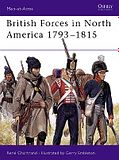Well in brief - Overlord is a Memoir '44 variant game. The idea is that the players combine two sets of the basic game and set the boards side by side.
You can find the rules here.
Above you can see an example board set up for the battle of Prokhorovka. You can see that the three sections of the normal board are now six. The game can be played with six players, but ideally you should have eight, divided into two teams of three or four.
An Overlord game in full swing, in each case the Field General in the centre is playing the Commander in Chief.
In this case, Siskey the Commander in Chief, on the Soviet side is standing up to get a better view of the field
These teams are made up of three "Field Generals" and one "Commander in Chief". If you've six players, the Command in Chief also takes one of the Field General spots. Each Field General is responsible for a section of the battlefield. On the enlarged board, the two sections on the left (what would have been the left flank and centre section on the normal board) become the left flank, the two centre sections become the centre and so on.
The Commander in Chief draws a hand of cards, typically eight to twelve. He may give out up to three cards every turn, but only draws two at the end of his turn. He may give out those cards in any combination he wishes, one to each general, two to one and none to the others or however he wishes.
Cards are divided into two types, section and tactics cards. In Memoir '44, section cards are green, tactics cards are grey. For Napoleonics, we sort of determined which was which as we went along, but basically if a card does not refer to a specific section (left, centre, right) we treated it as a tactics card.
Field Generals may play one tactics card or two section cards (one in each of their sections).
I have been criticised as a somewhat "hands on" Commander in Chief
In the rules as written, the Field General must then play those cards, but we leave it their discretion. A Field General may choose to ignore the instructions of the CinC, but may find himself short of cards thereafter!
In Memoir '44 there is a rule called "Taking the initiative", whereby a Field General who find himself without cards can roll a die and move a unit of the type indicated. However, on a flag he must retreat a unit and on a grenade symbol a unit (selected by the player) must take a casualty. We've always deemed this overly punitive and used to allow a player to roll a die in each section, while discounting the flag and the grenade results.
For Napoleonics, I've taken a different tack and use the following rule.
On a turn when a Field General has not played a card, he may activate any unit attached to or adjacent to a Leader.
The Special Deck that comes with the Memoir '44 Overlord set
Normally we use a standard deck of cards with some changes to how the cards play. Days of Wonder did release a special Overlord deck with the changes on them, but for Napoleonics as it was our first game we just played with a standard deck and made up house ruling on the fly, based on what we'd previously done with Memoir '44.
Here's a quick list.
Section Cards
Scout cards - Played as written, but a Commander in Chief may pick up one additional card per Scout played. This is the only way he can prevent his hand size being eaten away.
Probe & Attack Cards - Played as written.
Assault Cards - Move a number of units equal to four plus number of Generals in the section.
Forward - Play as probe, but this card may be given to any Field General.
Flank Attack - Play as probe, but may be given to Field General commanding the right or left flank.
Similarly Coordinated Advance and Recon in Force, though Recon allows you to draw an extra card much like a Scout.
Tactics Cards
Bayonet Charge, Bombard, Cavalry Charge, Fire & Hold, Force Mach, Give them the Cold Steal (sic), Leadership, Le Grand Manoeuvre, Short of Supply. - Played as normal.
Counter-attack - played by the Commander in Chief directly from his hand, counts as whatever card it replaces.
First Strike - played by the Commander in Chief directly from his hand and immediately replaced. Doesn't not count as a card play.
Elan - played by the Commander in Chief directly from his hand. This is the only card played this turn. Each Field General rolls four dice and moves accordingly.
Rally - played by the Commander in Chief directly from his hand. This is the only card played this turn. Commander in Chief rolls dice equal to his hand size and distributes them as he wishes.












































































